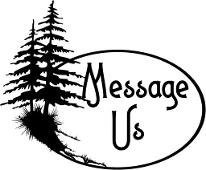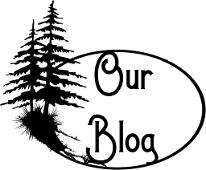
Little Cubs Learning Cabin Early Childhood Education
The right curriculum is the utmost important part in ensuring each child has a well-rounded and positive learning experience to advance them into today's world academically, physically, socially, mentally, and emotionally. Not every child can learn the same, which is why we have fostered several different approaches in our early learning environment.
Join us on this adventure and come explore our unique early childhood learning methods. After all, nothing about our Center is average. We like to be different because that's okay.
Though we do use specific curriculum programs with each age group, we also foster a Montessori approach in our teaching. If you're unsure of what Montessori learning is, that's okay, we can explain it to you!
The Montessori method of education
Montessori is a system of education for young children that seeks to develop natural interests and activities rather than using formal teaching methods. It was developed by a physician named Maria Montessori. It emphasizes independence and it views children as naturally eager for knowledge and capable of initiating learning in a sufficiently supportive and well-prepared learning environment. It discourages some conventional measures of achievement, such as grades and tests.
Popular elements include mixed-age classrooms, student freedom (including their choices of activity), long blocks of uninterrupted work (play) time, and specially trained teachers.
Baby Bears, Teddy Bears, and Honey Bears Curriculum
Baby Bears Infants 6 Weeks to 6 Months-Teddy Bears Infants 7 Months to 11 Months-Honey Bears 12 Months to 23 Months
For our Baby Bear, Teddy Bears, and Honey Bear Classes we use the HighScope Infant and Toddler curriculum.
Your youngest learners need to feel safe and supported so they can learn with their whole body and all of their senses. In a HighScope program, teachers focus on developing supportive, trusting relationships with the children in their care. We create rich environments that encourage very young children to explore and discover the world around them, helping them to engage in experiences designed to support their optimal development in all domains.
At Little Cubs Learning Cabin, we value and respect parents as their child's first teacher. That’s why we encourage teachers to partner with parents in learning everything they can about their infants to better care for their needs and plan for their development. As a result, our programs create a strong three-way bond between child, parent, and teacher.
Active learning is at the center of the HighScope Curriculum. It’s the foundation where young children gain knowledge through their natural play and interactions with the environment, events, and other people.
Infants are immersed in engaging experiences designed to promote motor and sensory interaction. Planned activities invite them to explore and play, which foster curiosity, persistence, creativity and problem solving. This interaction, along with close bonds with their teachers supports the development of abilities your baby needs to succeed in learning.
Adult-Child Interaction
Nurturing, responsive teachers practice primary care giving and continuity of care by scaffolding the individual needs and temperaments of infants and toddlers. Key strategies for adult-child interactions are touching, holding, playing alongside infants and toddlers at their level and pace, communicating in give-and-take exchanges verbally and non-verbally, respecting children’s choices and encouraging their efforts, acknowledging children’s strong emotions, and involving toddlers in resolving conflicts.
Learning Environment
The physical space is safe, flexible, and child oriented to provide comfort and accommodate the changing developmental needs and interests of the earliest learners. The space is organized into play and care areas that serve the needs of infants and toddlers and stocked with a variety of sensory-motor materials that infants and toddlers can reach, explore, and play with in their own way at their own pace. With nurturing and responsive caregivers as a home base, infants and toddlers are free to move about, explore materials, exercise creativity, and solve problems.
Schedules and Routines
A consistent yet flexible routine that accommodates individual children’s natural rhythms and temperaments gives infants and toddlers a sense of security and stability that creates trust between the child and teacher and builds independence as children engage with their environment and the people around them. Each routine is built around daily events and care giving routines that value infants’ and toddlers’ active learning.
Observation
Ongoing child and program assessment is an underlying component of the HighScope Curriculum. Objective observations of children allow teachers to intentionally plan to build on individual and group interests and scaffold development by supporting what children know while gently extending their learning.
Cognitive & Physical Development
Your baby will explore and experiment with hands-on activities that connect learning to their interests. We use stimulating experiences that use reading, music, art, physical activity, and daily outdoor times to reinforce skills and help your child accomplish important milestones.
Placing a toy just within reach presents a small physical challenge. It encourages your infant to explore and inspires persistence.
Important math and science skills are developed as children experience new encounters through touch, taste, sight, hearing, and smell each day.
Language & Literacy Development
Meaningful interactions with adults allow babies to develop important communication skills. Teachers connect with each child by describing experiences, reading stories, singing songs, and teaching sign language to improve literacy.
As part of daily activities designed to promote communication and reduce frustration, sign language helps your baby express basic emotions, wants and needs. Mimicking vocal sounds like babbling, cooing, gurgling, growling, and giggling enhances language development.
Social & Emotional Development
We understand how unique your baby and family are and honor that fact with respect to each family’s culture. Whether it is reading books that celebrate diversity or hearing teachers describe family photos placed around the room, your baby will have a solid foundation for making friends and accepting differences.
Creative activities that include simple art materials and musical instruments allow for plenty of self-expression.
We seek to build self-esteem and encourage acceptance through the use of multi-cultural puppets and toys to tell stories, introduce concepts, and sing songs.
Cubsters Curriculum
2 & 3 Year Olds
Our Cubster Curriculum involves a multitude of different learning techniques, both online and offline. ABC Mouse is one of our favorites! With ABC Mouse, we step into Art, Colors, Shapes, and Numbers. Each child will receive their own ABC Mouse account to use not only in school but also at home, which is a major plus! Our teachers will also incorporate Geography and American History. It is very important to learn about where we come from! We will also continue using our HightScope Curriculum in this class.
How We Teach
In a HighScope early preschool program, teachers ignite children’s interest in learning by creating an environment that encourages them to explore learning materials and interact with adults and peers. We focus on supporting early learners as they make decisions, build academic skills, develop socially and emotionally, and become part of a classroom community. Active learning is at the center of the HighScope Curriculum. It’s the foundation of young children gaining knowledge through their natural play and interactions with the environment, events, and other people.
Adult-Child Interaction
Teachers act as partners, working alongside children and communicating with them both verbally and non-verbally to encourage learning. Key strategies for adult-child interactions are sharing control with children, communicating as a partner with children, scaffolding children’s play, using encouragement instead of praise, and taking a problem-solving approach to supporting children in resolving conflicts.
Learning Environment
To create a predictable and active learning environment, teachers arrange and equip the classroom with diverse, open-ended materials that reflect children’s home, culture, and language. The room is organized and labeled to promote independence and encourage children to carry out their intentions.
Daily Routine
A consistent framework for the day provides a balanced variety of experiences and learning opportunities. Children engage in both individual and social play, participate in small- and large-group activities, assist with cleanup, socialize during meals, develop self-care skills, and exercise their small and large muscles. The most important segment of the daily routine is the plan-do-review sequence, in which children make decisions about what they will do, carry out their ideas, and reflect upon their activities with adults and other children. These higher-level thinking skills are linked to the development of executive functions, which are needed to be successful in school and life.
Assessment
Ongoing child assessment is also an underlying component of the HighScope Curriculum. Objective anecdotal observations of children collected throughout children’s natural play allow teachers to assess child progress and plan meaningful learning experiences.
Etiquette
It is important not to just focus on academics but to also teach children polite behavior. On a social level, we will teach children how to use their manners, how to be kind to others, and how to be respectful.
Hands On
Children will use both STEAM and STEM Activities to learn to think outside the box.
Independence
With independence comes motivation, self sufficiency, and satisfaction. Children that are not potty trained yet will learn to use the potty like big boys and girls. They will learn how to wash their hands or to ask for help to wash their hands. They will learn how to clean up after play time and what organization skills are.
Health and Safety
Yes, you read that right! It is very important in today's world for children this young and even younger to learn how to be safe and protect their selves or others. As far as health education goes, we will teach children that washing their hands is very important. Covering their face when they sneeze or cough, not putting their hands on their faces, in their mouths or on anyone else. How to steer clear of bodily fluids is very important too and something most parents and educators seem to forget about but we think it's something pretty important. In safety, we will learn what to do in case of a fire, tornado, a thunderstorm that knocks the power out, stranger danger, and the importance of staying with an adult or parent when they are out and about.
Little Bear Cubs and Little Cub Cadets Curriculum
Little Bear Cubs Preschool for 4 Year Olds-Little Cub Cadets Kinder Prep for 5 Year Olds
Our Preschool and Kinder Prep Classes Curriculum involves a multitude of different learning techniques, both online and offline. In these classrooms we use the HighScope COR Kindergarten Entry Curriculum, as well as ABC Mouse. With ABC Mouse, we step into Science for early learners, Art, Colors, Shapes, and Numbers. Each child will receive their own ABC Mouse account to use not only in school but also at home, which is a major plus! Our teachers will also incorporate Geography and American History at an age appropriate level. It is very important to learn about where we come from!
When teachers use COR for Kindergarten they get a comprehensive view of each child’s development at kindergarten entry and throughout the school year. Understanding each child’s level of developmental progression in the areas crucial for future school success is fundamental to a teacher’s ability to support each child’s learning.
COR for Kindergarten provides that insight and more in one assessment system that teachers can successfully administer and reliably score. Not only does this online assessment system enable teachers to use the information they collect to inform individualized instruction and develop small- and whole-group lesson plans, it can also help them detect learning problems, allowing them to quickly intervene and monitor children’s progress.
- COR for Kindergarten is organized into five domains:
Literacy and Language
Mathematics
Health and Physical Development
Approaches to Learning
Social and Emotional Development
COR for Kindergarten comprises the Kindergarten Entry Record (KER), the Ongoing Record (OR), and a progress-monitoring tool.
The KER is an observation-based assessment administered during the first few months of school that measures what a child knows and can do at kindergarten entry across five domains.
The Ongoing Record (OR) is an observation-based assessment that measures the same five domains and consists of the 20 KER items and 10 additional items that kindergarten teachers and experts identified as useful to track throughout the Preschool to kindergarten year. The OR measures attainment of end-of-year kindergarten standards.
The progress-monitoring tools can be used by teachers to monitor the growth of children who need additional support to attain the end-of-year kindergarten standards.
Etiquette
It is important not to just focus on academics but to also teach children polite behavior. On a social level, we will continue to teach children how to use their manners, how to be kind to others, and how to be respectful.
Hands On
Children will use both STEAM and STEM Activities to learn to think outside the box, they will also learn how to use scissors, how to match like things, how to organize, how to build things and so much more.
Independence
With independence comes motivation, self sufficiency, and satisfaction. Children will learn things such as, how to dress themselves, put on hats, jackets, backpacks, and so on. They will learn how to wash their hands and other simple tasks.
Health, Safety and Survival
Yes, you read that right! It is very important in today's world for children this young and even younger to learn how to be safe and protect their selves or others. As far as health education goes, we will teach children that washing their hands is very important. Covering their face when they sneeze, not putting their hands on their faces, in their mouths or on anyone else. How to steer clear of bodily fluids is very important too and something most parents and educators seem to forget about but we think it's something pretty important. If Johnny cuts himself, Susie needs to know that it's not safe to touch Johnny's bloody boo boo but instead, to get help from the closest adult. In safety, we will learn what to do in case of a fire, tornado, a thunderstorm that knocks the power out, stranger danger, how to call 911 and the importance of staying with an adult or parent when they are out and about. On the survival learning, we will teach age appropriate survival skills. This may include teaching children not to drink just any water source found outside, what to do if they have to run and hide, the importance of staying warm and dry and so on.
Cub Cadet Academy
Coming Soon!
Private Primary School!
Grades Kindergarten through.....





